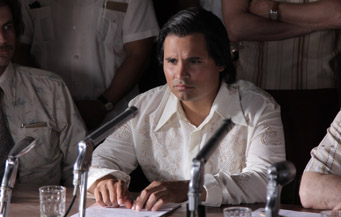|
|
BOP Interview: Diego LunaBy Ryan MazieMarch 26, 2014
I wanted [the viewer] to feel the struggle from the perspective of a farm worker. It’s very easy to arrive at the fields and to see it and have a feeling that you’re in this gorgeous landscape. Very rich greens, a blue sky, and the sand on the ground give you this feeling of a desert. I didn’t want [the viewer] to feel that. For me, it was very important for the audience to always be reminded that they were there and it wasn’t a choice. They had to be there, because there was no other option, besides running. You pack a 10 year movement into 90 minutes of film, so how did you decide what particular events you would use? I knew I didn’t want to do a film that started the day he was born and ended the day that he died, because an hour and 45 minutes can never be enough to show the life of someone. So I decided to concentrate on one achievement and that’s the boycott. Why? Because it’s very pertinent to say that it’s still possible and the only way for a real change to happen. When we engage with consumers and we remember that we are all consumers. Being consumers comes with a responsibility, and if we all know this, then the world would be a better place in a second. We cannot allow indifference to rule our lives. When I buy something, I should know what’s behind it. To me it was very simple and can be applied to any context. I try to make my films connect and that’s the way that I connect with Cesar. Cesar Chavez is released on March 28th.
|

|
|
|

|
Friday, May 3, 2024
© 2024 Box Office Prophets, a division of One Of Us, Inc.


